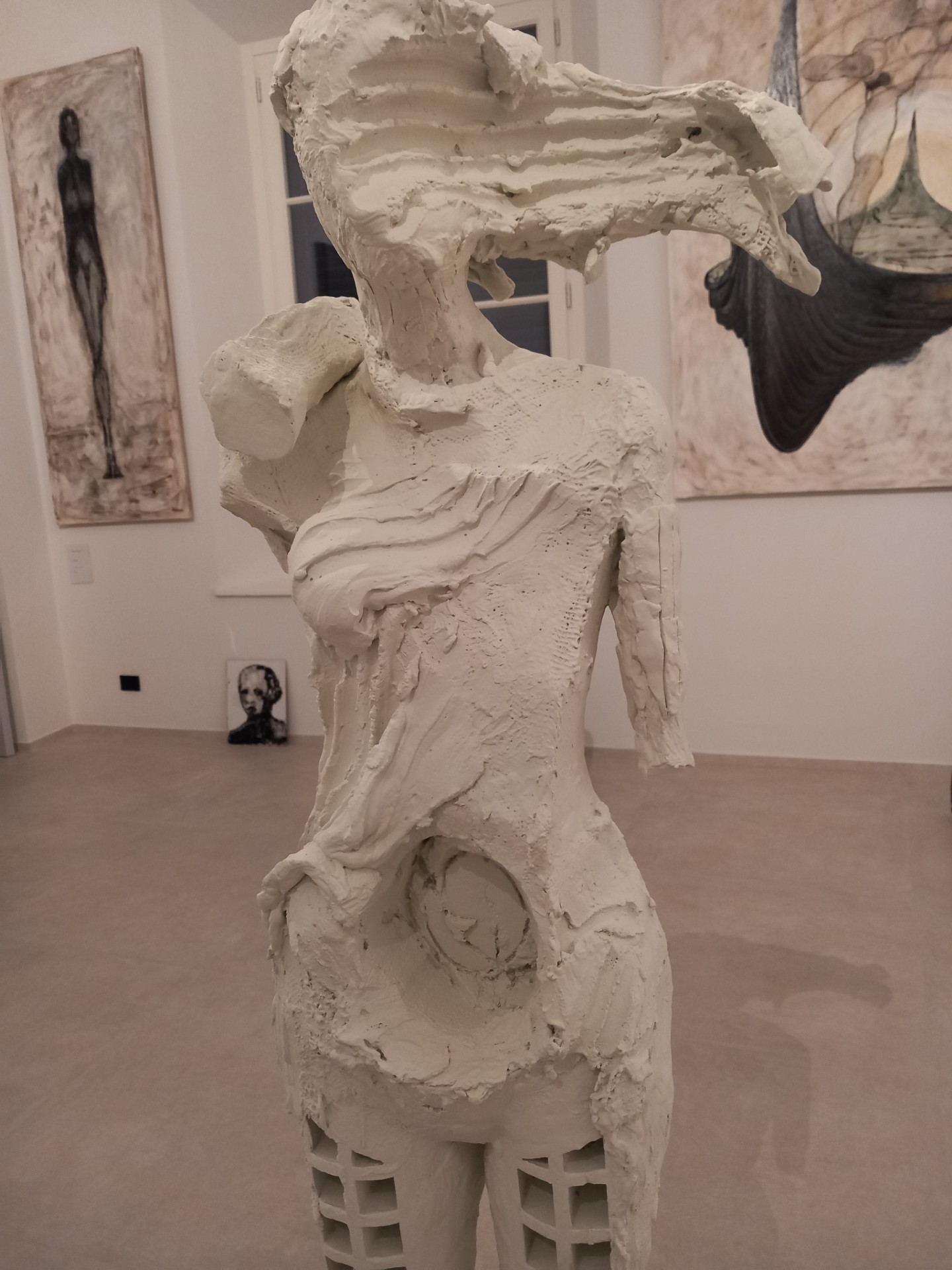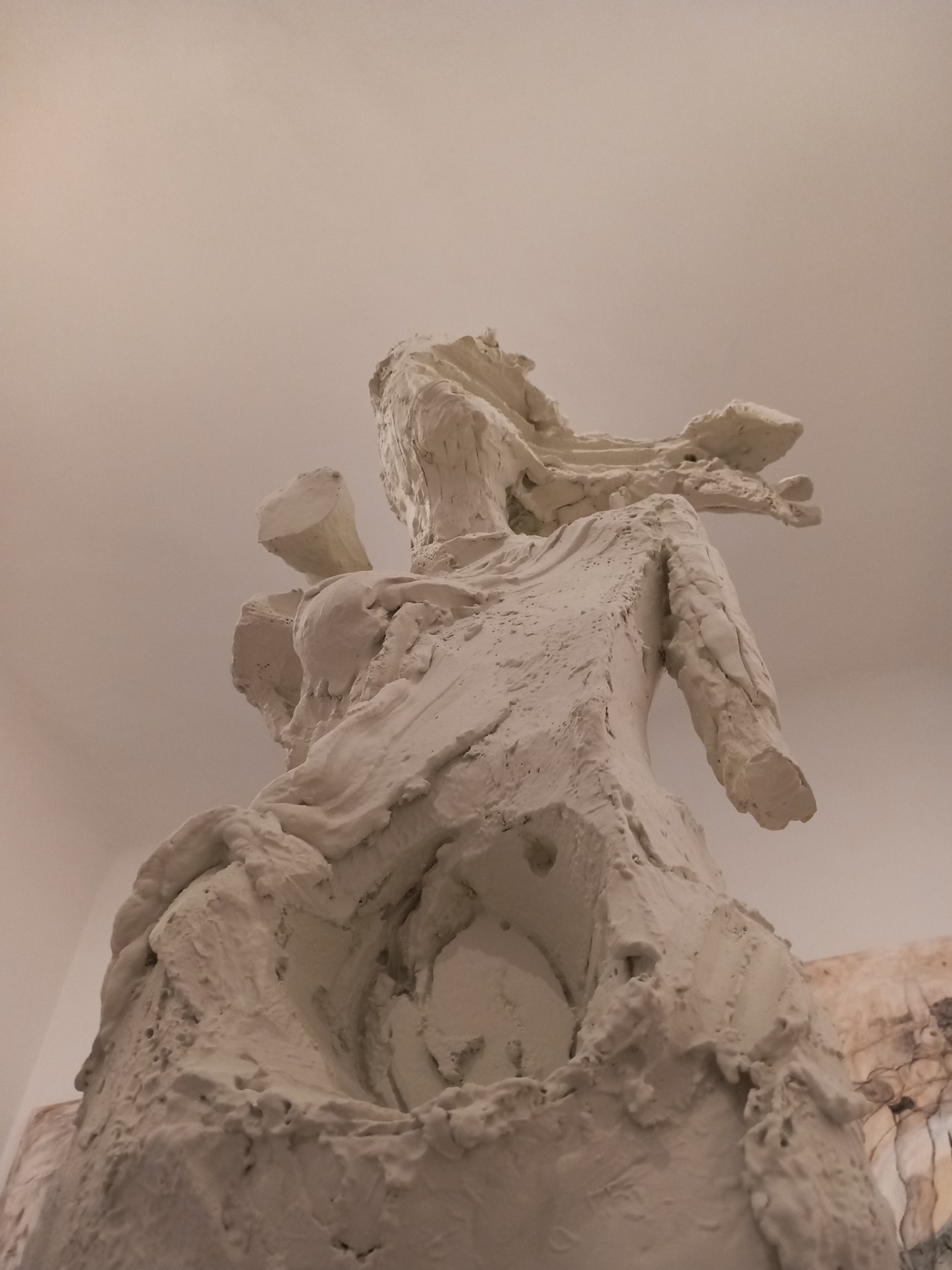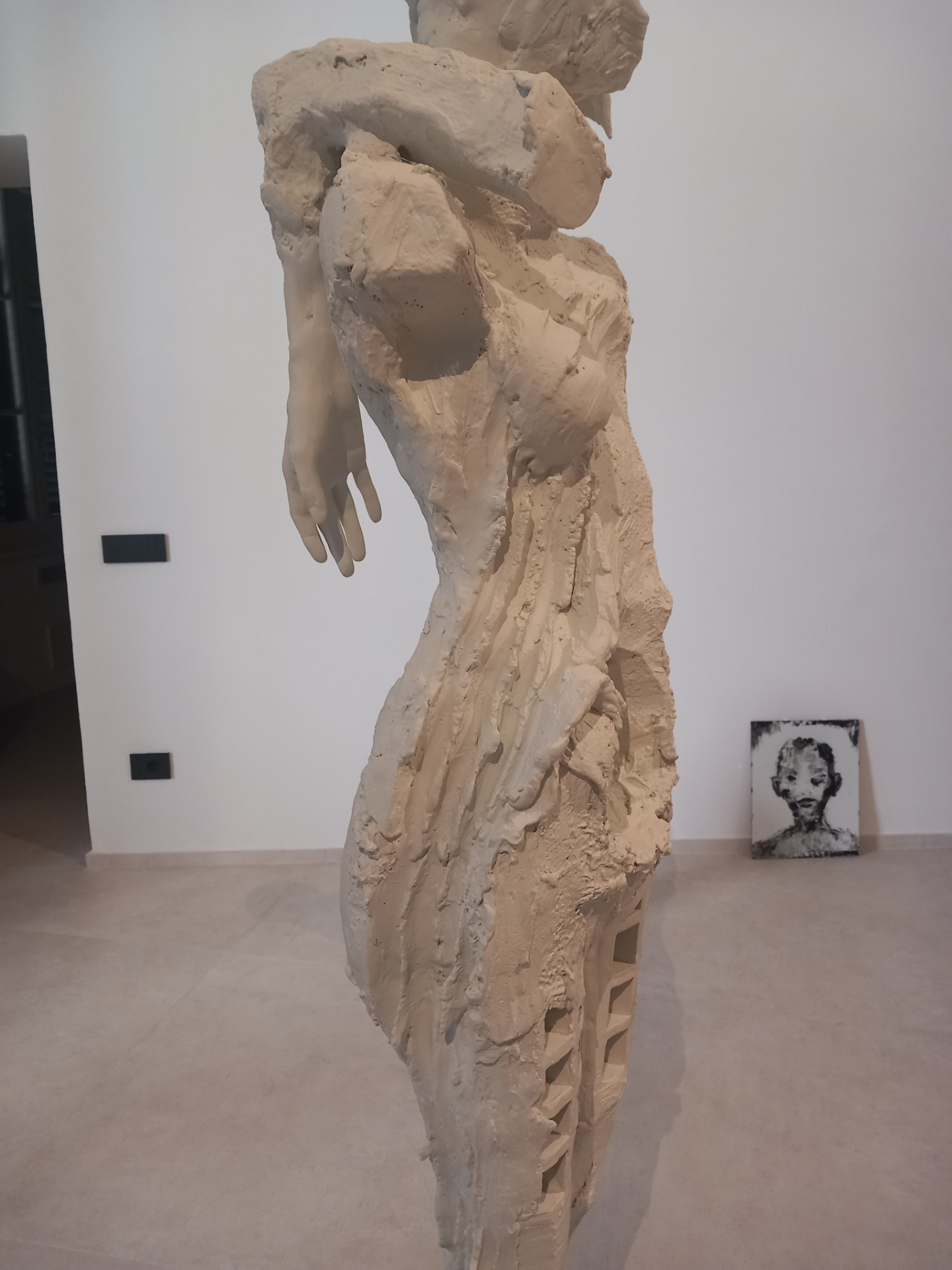…Altmejd’s work provides a basis of rethinking a vast array of topics, such as art and energy, the ongoing dynamics of becoming, the separation of animal and human, the artist as facilitator instead of sole generator of an idea, and the postmodern grotesque.
A gardener by temperament and inclination, Altmejd regards nature’s ongoing decomposition of organic substances as enormously renewing and replete with positive forces of regeneration, which he frequently underscores in his sculptures through liberal use of crystals primarily because of their ability to multiply, giving them the appearance of growth.
DA: “I see my work as post-apocalyptic. The basis is disaster, but then it’s about how things are grow on top of that. There is nothing negative in my work.”
With a series of plaster angels, referred to by the artist as “The Watchers”, initiated in 2009, Altmejd attributes the creative act to the sculptures themselves, with the result that any association of divinity attending the creative act can then be attributed to these beatific creatures’ ability to self-originate.
DA: “ The first time I made an angel, it came from the process of making a sculpture. It was a plaster figure made of a casts of hands that I use to move things around. It’s as the sculpture is shaping itself, and this is important. It’s like everything in the sculpture comes from the sculpture itself. I liked the idea of dragging the material upward when forming ‘The Watchers’. The sculpted figures are themselves dragging the material upward. There is something fundamental in the idea of trying to transcend the material by simply moving it: taking material from the bottom and moving it up to the top. When I brought the material up, it provided the extra amount needed to create the angel’s wings.”
The approach to becoming, interpreted as an unceasing dynamic the work of art sets up, even though Altmejd has personalised this theory in terms of energizing his work, so that it correlates with the Romantic-area of art continuing to become – a heroic striving, extending into infinity.
Altmejd’s figures constitute a celebration of life’s ongoing dynamics, so that they also participate in the aesthetic sensibility of the grotesque, a type of becoming epitomised in his work in terms of his Werewolves and Giants.
Altmejd has readily acknowledged the importance of the grotesque as “necessary to understand beauty”.
DA: “I felt that I could allow myself to make a standing body if it was a giant, because in some way, it was not a body: it was a landscape or a piece of architecture before being a body. I did a bit of research on giants and found that in many mythologies, they are created before men and women, so for me, they are metaphors of nature…In fairy tales, giants take on qualities of a particular landscape. Most local legends connect such natural phenomena as mountains, rivers, rocks, and islands with bodies of giants or with their different organs; these bodies are, therefore, not separated from the world or from nature.”
A selection from over 60 Solo/Group Exhibitions:
2020 Coleccion Solo, Madrid
2016 Royal Museum of Fine Arts of Belgium, Brussels
2015 Musee d’Art modern de la Ville de Paris
2011 Saatchi Gallery, London
2010 National gallery of Canada, Ottawa
2010 Solomon R. Guggenheim Museum, New York
2009 Museum of Contemporary Art, Los Angeles
2008 Tate Liverpool
2008 Guggenheim Bilbao
2007 Spertus Museum, Chicago
2007 52nd Venice Biennale
2004 Whitney Biennial, New York



